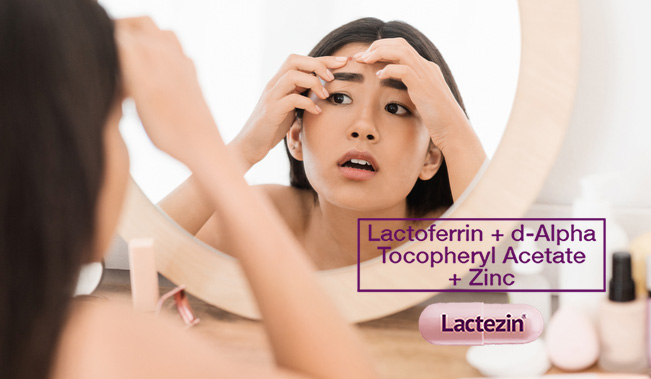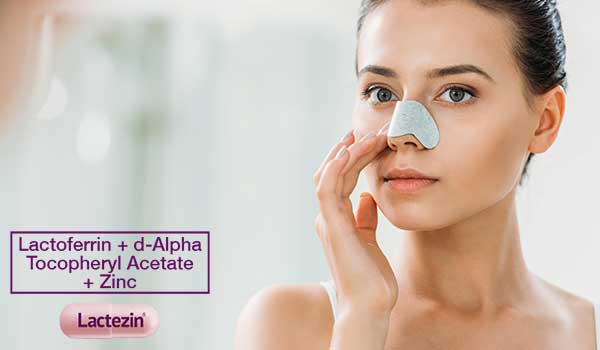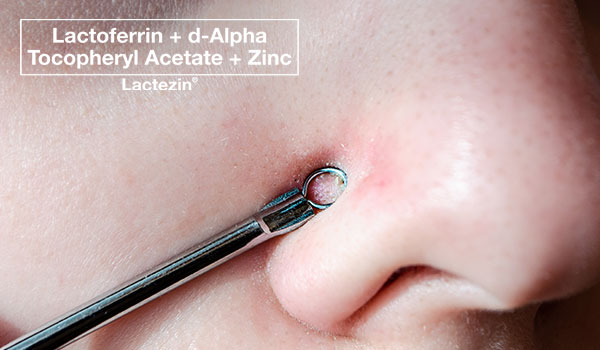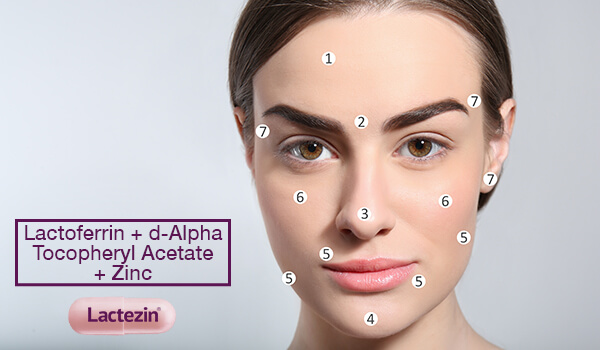Forehead Acne: How to Reduce Tiny Bumps on the Forehead

No matter where they appear on the face, acne is unsightly. It can affect your confidence, and may even get in the way of how you normally go through your day. The good news is that there are ways to deal with this skin concern. For forehead acne, check out the ways on how you can reduce tiny bumps on the forehead!
Understanding Forehead Acne: There’s More than 1 Type
Finding the best solution for a skin woe starts with learning and understanding the problem. While acne in general is the result of pores clogged with dirt and oil, forehead acne is not all the same. They come in different types such as the following.
Comedones
Comedones are more widely known as blackheads (open comedones) and whiteheads (closed comedones). Frequently appearing on the T-zone (forehead, nose and chin), comedones are a type of acne that’s common in those with oily skin.
Pustules & Papules
Compared to blackheads and whiteheads, pustules (red bumps) and papules (red bumps with white centers) are raised, reddish pimples that are less common to appear on the forehead.
Milia
Milia are small, dome-shaped bumps that are either white or yellow. Technically not a type of acne, milia appear when keratin (a strong protein in skin tissues and hair) are trapped on the surface of the skin. These bumps can also occur as the result of the skin losing its ability to exfoliate. While not painful or itchy, milia may cause discomfort, as rough sheets and textures can irritate the affected area.
The Causes of Acne Breakouts on the Forehead
Acne and breakouts will always occur as a result of pores being clogged with trapped dirt and oil. For acne on the forehead, the following may be contributing factors.
Overproduction of Sebum
In online features about acne, sebum (oil) tends to be in a bad light. The truth is that the skin needs oil to stay hydrated and to keep its protective barrier up. Where it becomes bad is when there’s too much oil. Because too much oil leads to clogged pores and acne. Part of what’s commonly known as the T-zone, your forehead is one of the first areas to become oily when the skin’s sebaceous glands become overactive.
Not Exfoliating Regularly
Too much oil on the skin may be a leading cause of acne, but it’s just one of a few. Dead skin cells, when not sloughed off regularly, leads to bacteria buildup in pores.
Putting on Headwear and Gears Too Frequently
Remember that heat, friction and occlusion on the skin can trigger acne and breakouts. In the case of forehead acne, wearing items such as hats, bandanas, helmets and even bandanas ups your chances of developing tiny bumps on your forehead.
Using Edible Oils for Skin or Hair Care
The good news: oils such as coconut oil and olive oil may be nourishing for the skin and hair. The bad news: these and other food-grade oils encourage the growth of microorganisms on the skin. Keep in mind that what you can eat, bacteria can too. Like in most things, moderation in usage is the safe way to go.
What You Use on Your Hair
As with oils that you use on your hair, certain hair products may make their way onto your forehead. Products that are oily and sticky are bad news as they may add to the skin’s oiliness, and trigger or worsen acne.
Letting Sweat Linger on the Skin
While sweating is great for detoxifying the skin, not washing it off can make forehead acne worse as sweat increases oil in the follicles.
How to Reduce Tiny Bumps on the Forehead
Once you pin down what causes your forehead acne, finding a solution can be as easy as modifying the bad habits out of your routine. To make your treatment hardworking, here are skin care suggestions on how to reduce those tiny bumps on the forehead.
Cleanse & Exfoliate Regularly
Acne on the forehead or anywhere on the face can be treated and prevented by paying special attention to the pores of your skin. Cleansing daily and exfoliating 1-2 times a week helps keep pores free of clogs and bacteria buildups. Just remember to stick with products that are non-drying and gentle on the skin.
Moisturize, Moisturize, Moisturize
When skin becomes dry, the sebaceous glands can overcompensate by producing too much oil. To keep that under control, maintain the habit of moisturizing after cleansing and toning the skin. And make sure to use a moisturizer that’s non-comedogenic so that you won’t have to worry about pores getting clogged.
Seek Expert Solutions
Stubborn forehead acne? Consider consulting skin experts for solutions that would suit your skin’s needs. Over-the-counter medication can also help.
To help treat and prevent acne, Lactoferrin + d-Alpha Tocopheryl Acetate + Zinc (Lactezin) combines lactoferrin’s anti-bacterial and anti-inflammatory properties with vitamin E’s skin renewing effects, and zinc’s oil-regulating benefit.
Catch more skin care tips for the rainy season or summer time only from Lactoferrin + d-Alpha Tocopheryl Acetate + Zinc (Lactezin). Lactoferrin + d-Alpha Tocopheryl Acetate + Zinc (Lactezin) is available in all leading drugstores nationwide. You may also purchase online through Lazada and Shopee.
IF SYMPTOMS PERSIST, CONSULT YOUR DOCTOR.
ASC REFERENCE NO. U035P090221LS
SOURCES:
https://www.medicalnewstoday.com/articles/322130
https://www.healthline.com/health/forehead-acne#causes
https://www.byrdie.com/what-causes-forehead-acne-4844912
https://www.healthline.com/health/beauty-skin-care/comedonal-acne


